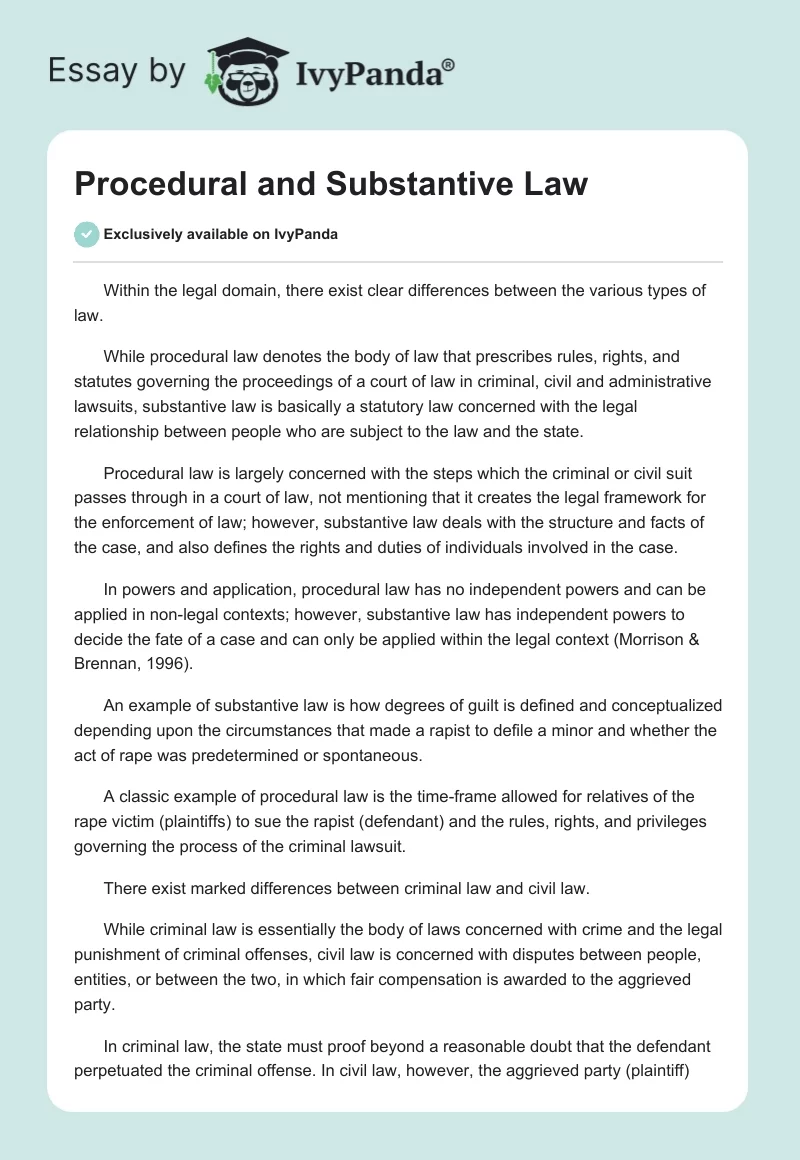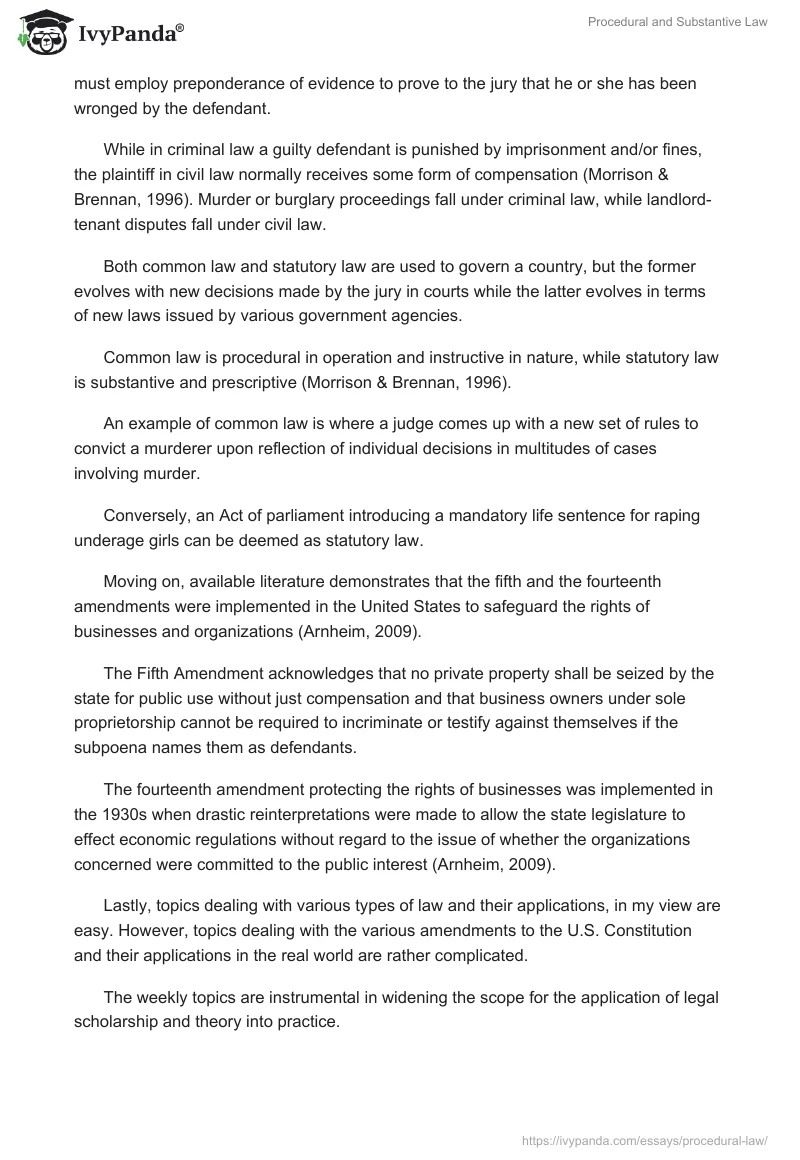Within the legal domain, there exist clear differences between the various types of law.
While procedural law denotes the body of law that prescribes rules, rights, and statutes governing the proceedings of a court of law in criminal, civil and administrative lawsuits, substantive law is basically a statutory law concerned with the legal relationship between people who are subject to the law and the state.
Procedural law is largely concerned with the steps which the criminal or civil suit passes through in a court of law, not mentioning that it creates the legal framework for the enforcement of law; however, substantive law deals with the structure and facts of the case, and also defines the rights and duties of individuals involved in the case.
In powers and application, procedural law has no independent powers and can be applied in non-legal contexts; however, substantive law has independent powers to decide the fate of a case and can only be applied within the legal context (Morrison & Brennan, 1996).
An example of substantive law is how degrees of guilt is defined and conceptualized depending upon the circumstances that made a rapist to defile a minor and whether the act of rape was predetermined or spontaneous.
A classic example of procedural law is the time-frame allowed for relatives of the rape victim (plaintiffs) to sue the rapist (defendant) and the rules, rights, and privileges governing the process of the criminal lawsuit.
There exist marked differences between criminal law and civil law.
While criminal law is essentially the body of laws concerned with crime and the legal punishment of criminal offenses, civil law is concerned with disputes between people, entities, or between the two, in which fair compensation is awarded to the aggrieved party.
In criminal law, the state must proof beyond a reasonable doubt that the defendant perpetuated the criminal offense. In civil law, however, the aggrieved party (plaintiff) must employ preponderance of evidence to prove to the jury that he or she has been wronged by the defendant.
While in criminal law a guilty defendant is punished by imprisonment and/or fines, the plaintiff in civil law normally receives some form of compensation (Morrison & Brennan, 1996). Murder or burglary proceedings fall under criminal law, while landlord-tenant disputes fall under civil law.
Both common law and statutory law are used to govern a country, but the former evolves with new decisions made by the jury in courts while the latter evolves in terms of new laws issued by various government agencies.
Common law is procedural in operation and instructive in nature, while statutory law is substantive and prescriptive (Morrison & Brennan, 1996).
An example of common law is where a judge comes up with a new set of rules to convict a murderer upon reflection of individual decisions in multitudes of cases involving murder.
Conversely, an Act of parliament introducing a mandatory life sentence for raping underage girls can be deemed as statutory law.
Moving on, available literature demonstrates that the fifth and the fourteenth amendments were implemented in the United States to safeguard the rights of businesses and organizations (Arnheim, 2009).
The Fifth Amendment acknowledges that no private property shall be seized by the state for public use without just compensation and that business owners under sole proprietorship cannot be required to incriminate or testify against themselves if the subpoena names them as defendants.
The fourteenth amendment protecting the rights of businesses was implemented in the 1930s when drastic reinterpretations were made to allow the state legislature to effect economic regulations without regard to the issue of whether the organizations concerned were committed to the public interest (Arnheim, 2009).
Lastly, topics dealing with various types of law and their applications, in my view are easy. However, topics dealing with the various amendments to the U.S. Constitution and their applications in the real world are rather complicated.
The weekly topics are instrumental in widening the scope for the application of legal scholarship and theory into practice.
References
Arnheim, M. (2009). U.S. Constitution for dummies. Hoboken, NJ: Wiley Publishing, Inc.
Morrison, A. B. & Brennan, W. J. (1996). Fundamentals of American law. Oxford: Oxford University Press.


